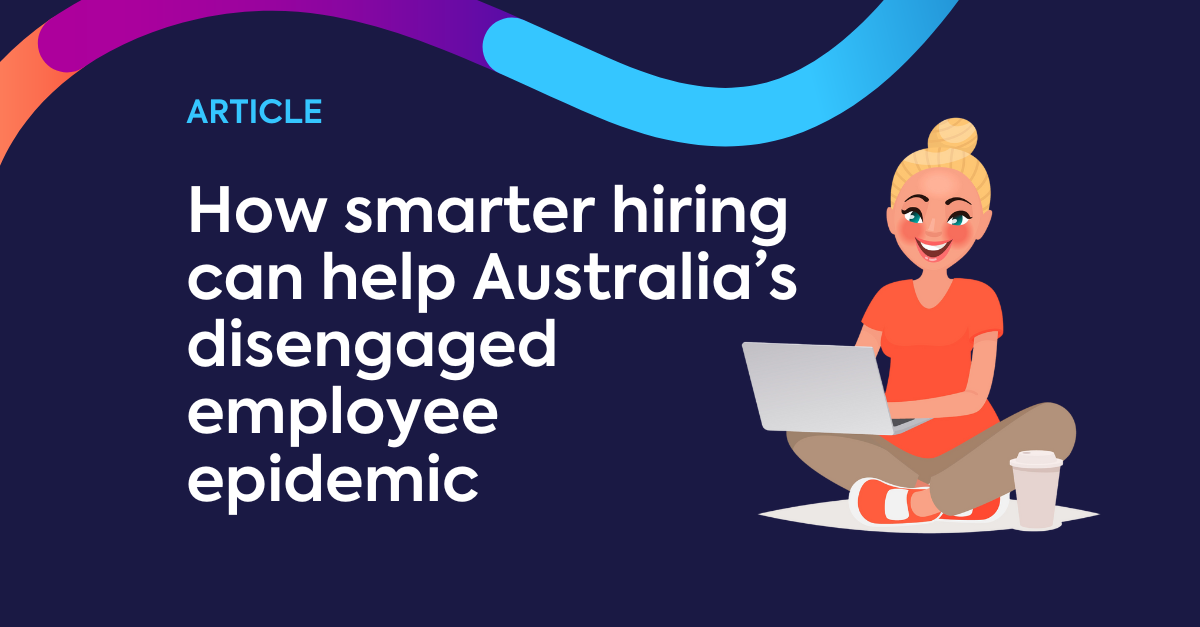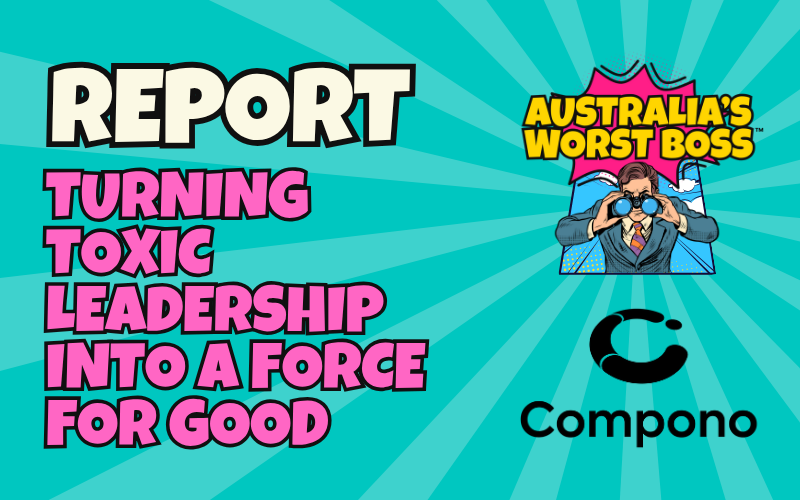Australia's Worst Boss: Turning Toxic Leadership into a Force for Good
Why We Went Looking for Australia's Worst Boss What makes a good leader? It’s a question that has sparked endless books and boardroom debates, yet...
Become the expert on delivering
valid and fair assessments for
your training and education.
Hire
|
Engage
|
Develop
|
|
Automatically match to candidates who are a great fit for your team culture and who are intrinsically motivated to succeed. |
Deeply understand your organisation with science-backed analytics on your culture, team design, and engagement. |
Back your onboarding, compliance and skill development with industry-leading credentialling, competency and capability expertise.
|
Hey Compono helps you understand your personality and how to turn it into your superpower.
First 1,000 users get 10 minutes free.
Just $15 a month after that — cancel anytime.
3 min read
 Rudy Crous
Oct 10, 2024 2:23:20 PM
Rudy Crous
Oct 10, 2024 2:23:20 PM

Globally, businesses are facing an epidemic of disengaged employees. A Gallup report revealed 71% of Australians are not engaged with their jobs and 15% are actively disengaged. For the actively disengaged, that’s at least 1 in every 7 people hired.
In Australia this equals over 1.28 million actively disengaged employees if we look at ABS data on the full-time workforce (8.5 million people).
According to Gallup, these individuals are not just unhappy at work, but are ‘resentful that their needs aren’t being met and are acting out their unhappiness through potentially undermining what their coworkers accomplish’.
This unhappiness leads to lower productivity in the workplace (lower discretionary effort levels) and inevitably, an increase in employee turnover.
The end result is a huge cost to Australian businesses.
Disengagement is estimated to cost a company 34% of the employee’s salary. On an average salary of $50,000 that is $17,000 per year.
This money is spent on areas to improve the role, including sick leave or recruitment fees to rehire. For a business of any size, this is a significant cost, and most concerningly, a preventable cost.
If we look at the whole of Australia, the monetary strain of disengaged employees reaches in the billions.
With 1.28 million actively disengaged employees costing about $17,000 on average, the cost rises to a total of more than $2 billion a year to Australia’s economy.
Companies believe they can fix an employee’s disengagement through wellbeing initiatives such as in-house yoga or instant gifting and recognition tools.
However, these initiatives, while well intentioned, are often knee jerk reactions or tactics that don’t address the root of the engagement problem.
The misalignment between company and job role expectations and that of the employee’s core motivational drivers, values, and purpose are at the heart of nearly every disengaged employee.
The first thing companies need to consider for a happier workplace and a more engaged workforce is the quality of their hiring process.
Adopting good practice methodologies at the very start of the employment life cycle are key to ensuring job satisfaction, employee wellbeing, and predicting successful in-role performance.
Evaluating the alignment between the candidate and company expectations sets the foundation for a healthy long term employee-employer relationship.
This alignment, in academic terms is called the Psychological Contract. Breaching this contract during hiring will only set employees up for failure regardless of the initiatives the companies run.
If there is misalignment between the employee and the company in regards to the role, the company culture, and the management style, employees won’t be committed from the start and will become disengaged as their initial expectations are never met.
Research shows that for newly hired employees, the number one reason for leaving is that the job or workplace and how it has been ‘sold’ to the candidate, is not as expected.
Unmet expectations’ cause 4% of new hires to leave their job on the first day and another 50% to quit during the first 6 months.
For companies to make smarter hiring decisions and build healthier workplaces, they need to evaluate and define their company culture and hire in line with this benchmark.
Companies then need to evaluate a candidate’s work preferences, motivational drivers and behaviours and compare and contrast this information with the organisation fit requirements / benchmarks.
Access to this information at the very start of the recruitment process (rather than at the end of the hiring process as is the case in most workplaces) will allow both parties to avoid disillusionment, high turnover and adding to the $2 billion figure.
Provide candidates with a preview of the job through giving realistic work scenarios in the pre-selection process. This will allow a candidate to either opt in or out of the application process if it doesn’t align with what they are looking for in a job or work environment.
This includes providing clear insight to both the technical skills and experience required to be successful in the role as well as what it is like to work at your organisation and in the team.
Including these elements into the hiring process will mean that employees and the company are better set up for long-term success and will also allow both parties to have more informed discussions during the hiring process and will allow the company to provide greater detailed feedback to both successful and unsuccessful job candidates.
Having a more robust, holistic best practice approach at the start will allow you to reduce the percentage of disengaged employees and build a healthier happier company culture.
Get in touch to find out more.
Let us do the heavy lifting, so you can accelerate the hiring of candidates who are most likely to succeed. 🚀

Why We Went Looking for Australia's Worst Boss What makes a good leader? It’s a question that has sparked endless books and boardroom debates, yet...

Starting and scaling a business is tough enough without the chaos that comes with hiring the wrong people or struggling to keep them motivated....

Misalignment. It’s a word that sends shivers down the spine of business leaders everywhere. When employees and organisations aren’t on the same...